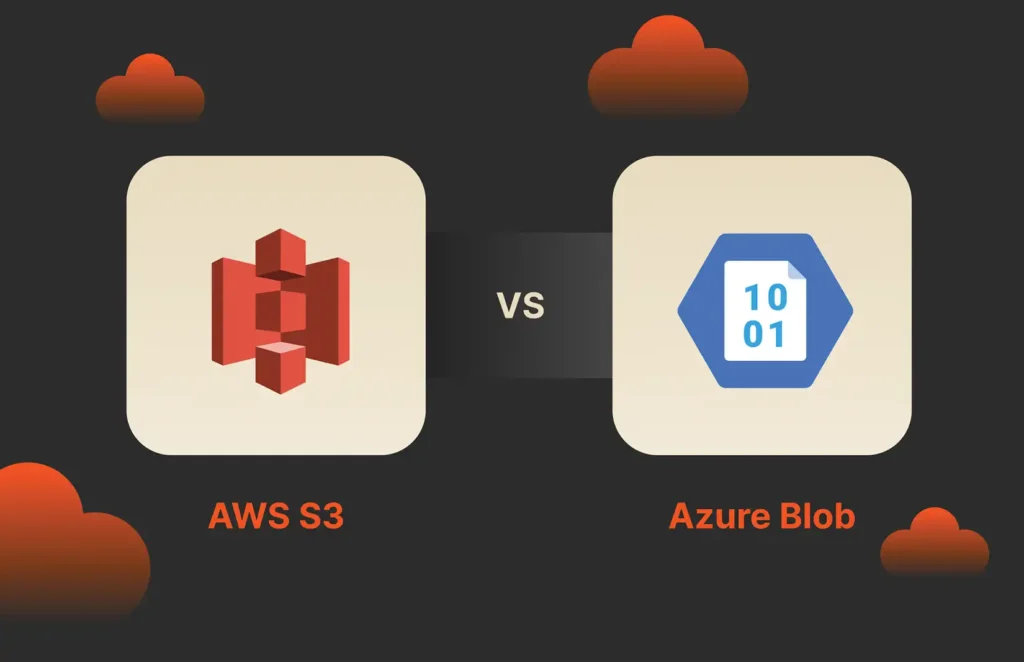Summary
OpenShift and Tanzu are container orchestration and management platforms. OpenShift is a popular choice for businesses where security and compliance are critical, while Tanzu is widely adopted in industries that have a focus on scalability and performance.
Businesses have a lot to gain from modern development and deployment techniques like containerization and microservices. These benefits include faster deployments, flexibility, portability, efficiency, agility, and improved security. With the growing adoption of containers, choosing the right platform for container orchestration and management is crucial for businesses aiming to enhance their DevOps capabilities and fully harness the benefits of the software development technique. OpenShift and Tanzu are two of the leading platforms in this space, each offering unique features and benefits. As a result, develipers having been debating OpenShift vs. Tanzu.
In this article, we’ll compare and contrast OpenShift and Tanzu to help you decide which platform is best for your specific needs.
Features of OpenShift
Developed by Red Hat, OpenShift is a Kubernetes-based platform that provides a comprehensive solution for deploying and managing containerized applications.
Some of its standout features include:
- Integrated developer tools: OpenShift offers a wide range of built-in tools to streamline development and deployment. This includes a web console for managing resources, Git integration for version control, CI/CD pipelines with tools like Jenkins or Tekton for automated builds and deployments, and source-to-image (S2I) builds for languages like Java, Python, and Node.js, which simplifies container image creation from source code.
- Security: OpenShift prioritizes security with features like automated security updates for the platform and container images, built-in security monitoring for proactive threat detection, and role-based access control (RBAC) for granular control over user permissions. Additionally, OpenShift supports secrets management for secure data storage and compliance with various security standards.
- Hybrid cloud support: OpenShift is designed for hybrid cloud environments, allowing applications to run seamlessly across on-premises infrastructure and cloud platforms. It utilizes Kubernetes operators for platform and application lifecycle management across these environments, providing a consistent experience for developers and operations teams.
Advantages of OpenShift
OpenShift, as a container orchestration platform, provides various featural advantages such as:
- Flexibility: OpenShift’s support for multiple programming languages and frameworks (like Java, Python, Node.js, Ruby, etc.) makes it a versatile choice for diverse development needs.
- Scalability: With robust scaling capabilities, OpenShift can handle workloads of varying sizes, making it suitable for enterprises with large deployments or startups with smaller-scale applications.
- Enterprise support: As a Red Hat product, OpenShift benefits from Red Hat’s extensive global support network and enterprise-grade service level agreements (SLAs), ensuring businesses receive reliable technical assistance.
Business Benefits of Using OpenShift
As with the adoption of containerization, using OpenShift to manage containers provides business benefits such as:
- Increased developer productivity: OpenShift’s integrated development tools and streamlined workflows help developers focus on writing code and innovation, reducing the time to market for new applications by simplifying and speeding up deployment.
- Enhanced security: Automated security updates, comprehensive monitoring, and RBAC access controls within OpenShift reduce the risk of security breaches and ensure compliance with industry standards, allowing businesses to focus on core operations with peace of mind.
- Cost savings: OpenShift supports hybrid cloud environments, allowing businesses to optimize their infrastructure costs. Existing on-premises investments can be leveraged alongside cloud resources, enabling a pay-as-you-go model for cloud services. This flexibility helps businesses avoid unnecessary infrastructure expenses.
Features of Tanzu
VMware Tanzu is a suite of products and services designed to help organizations build, run, and manage modern applications on any cloud. Tanzu goes beyond the Kubernetes-style container orchestration by providing a comprehensive platform for the entire application lifecycle.
Some of the key features Tanzu offers include:
- Kubernetes integration: Tanzu leverages Kubernetes clusters and extends its capabilities with additional services. Tanzu Kubernetes Grid provides a consistent and scalable foundation for managing Kubernetes clusters across environments. Tanzu Application Catalog offers a library of pre-built and certified containerized applications, streamlining application deployment. Tanzu Service Mesh facilitates secure service communication between microservices.
- Multi-cloud support: Tanzu supports a multi-cloud environment, enabling applications to run on various cloud providers (like AWS, Azure, and GCP) without code modifications. This provides businesses with the flexibility to choose the best cloud platform for their specific needs and avoid vendor lock-in.
- DevOps tools: Tanzu integrates with popular CI/CD tools like Jenkins or GitLab to automate the build, test, and deployment pipeline. Additionally, Tanzu offers tools for automated infrastructure provisioning and configuration management, streamlining DevOps workflows.
Advantages of Tanzu
Using Tanzu for container orchestration provides numerous advantages, such as:
- VMware ecosystem integration: Tanzu integrates seamlessly with VMware’s ecosystem, including VMware vSphere. This unifies the management experience for both virtual machines and containers. For instance, vSphere administrators can leverage familiar tools to manage containerized workloads alongside VMs, enabling a hybrid cloud approach where traditional workloads and modern applications can coexist on the same infrastructure.
- Comprehensive observability: Tanzu offers advanced monitoring and observability tools, providing deep insights into application health, performance, and resource utilization. This empowers teams to proactively identify and troubleshoot issues, ensuring application uptime and performance.
- Scalability and performance: Tanzu’s architecture is designed for high scalability and performance. It utilizes horizontal pod autoscaling (HPA) to automatically scale application deployments based on resource demands. This ensures that applications can handle fluctuating workloads efficiently, even under heavy load.
Business Benefits of Using Tanzu
Choosing Tanzu over other container orchestration tools can provide advantages such as:
- Streamlined operations: The integration with VMware’s ecosystem simplifies operations and management. vSphere administrators can leverage existing skill sets to manage both VMs and containers, reducing the need for specialized training and minimizing operational overhead for IT teams.
- Enhanced performance: With robust scalability and performance features, Tanzu ensures that applications run efficiently, even under heavy loads. HPA ensures resources are allocated optimally, preventing performance bottlenecks and delivering a consistent user experience.
- Flexibility and choice: The multi-cloud support provides businesses with the flexibility to choose the best cloud provider for their needs, avoiding vendor lock-in. This allows them to leverage the strengths of different cloud platforms while maintaining portability for their applications.
Comparison: OpenShift vs. Tanzu
Let’s compare the offerings of OpenShift and Tanzu across various key factors that you should consider when choosing between them.
Pricing Models
OpenShift and Tanzu offer flexible pricing models to cater to different business needs. OpenShift pricing varies depending on the deployment model (on-premises, cloud, hybrid) and cluster size. It offers a subscription-based model with predictable costs, as well as a pay-as-you-go option for cloud deployments.
Tanzu pricing may vary depending on the specific Tanzu products or services chosen. It offers both perpetual license and subscription-based models, allowing businesses to select the best fit for their budget and deployment strategy.
Scalability and Performance
OpenShift and Tanzu excel in scalability and performance, making them suitable for applications with fluctuating resource demands.
OpenShift’s robust architecture and support for hybrid cloud environments enables seamless scaling. It utilizes Kubernetes operators for automated scaling of applications and infrastructure, ensuring resources are allocated efficiently based on needs.
Tanzu leverages HPA and other Kubernetes features for horizontal scaling, allowing applications to automatically scale out by adding additional pods when traffic increases. Additionally, Tanzu offers vertical scaling capabilities for individual pods, providing granular control over resource allocation.
Ease of Use and User Experience
OpenShift provides a user-friendly web console that offers a visual interface for managing clusters, applications, and resources. Integrated developer tools streamline workflows for building, testing, and deploying containerized applications. This simplifies the development and deployment processes for developers of all experience levels.
Tanzu inherits the familiarity of the VMware ecosystem, making it easy for existing vSphere users to transition to managing containerized workloads alongside VMs within a unified platform. Additionally, Tanzu offers tools and plugins for popular DevOps tools like Jenkins and GitLab, simplifying integration into existing workflows and development pipelines. This reduces the learning curve for IT teams already accustomed to VMware products and DevOps practices.
Community Support and Resources
Red Hat offers comprehensive support for OpenShift, including access to knowledgeable support engineers, online knowledge base articles, and troubleshooting guides. OpenShift also benefits from a vibrant open source community. Additionally, Red Hat offers a wealth of learning resources for OpenShift, including documentation, tutorials, and online courses.
Like RedHat, VMware provides comprehensive support for Tanzu products and services, ensuring users have access to technical assistance when needed. Tanzu has a growing community of users and developers. While not as extensive as OpenShift’s, this community offers forums and online resources where users can connect and share knowledge. VMware also provides comprehensive documentation and a knowledge base for Tanzu products, offering users access to self-service troubleshooting resources.
Use Cases and Industries
Unique requirements, existing technology stacks, and regulatory environments can all play a role in influencing industry preferences.
OpenShift
OpenShift is a popular choice for businesses in various industries, particularly those where security and compliance are critical. Here are some specific use cases:
- Finance: Financial institutions leverage OpenShift for secure and compliant deployment of mission-critical applications like fraud detection systems and regulatory compliance tools.
- Healthcare: Healthcare providers use OpenShift to build and manage containerized healthcare applications, such as patient record management systems and telehealth platforms, ensuring patient data privacy and adherence to HIPAA regulations.
- Government: Government agencies utilize OpenShift for secure and reliable deployment of citizen-facing services and internal applications, benefiting from features like role-based access control and robust security audits.
OpenShift’s hybrid cloud support makes it ideal for businesses with existing on-premises infrastructure looking to extend to the cloud in a secure and manageable way.
Tanzu
Tanzu is widely adopted in industries with a focus on scalability and performance. Here are some examples:
- Technology: Tech companies use Tanzu to build and run large-scale web applications and microservices architectures, benefiting from its ability to handle high traffic volumes and ensure application responsiveness.
- Retail: Retail companies utilize Tanzu to run e-commerce platforms with high scalability and performance, ensuring a seamless customer experience during peak shopping seasons and flash sales.
- Telecommunication: Telecommunication providers are deploying network function virtualization (NFV) with Tanzu for agile service delivery and innovative network functionalities. Tanzu’s multi-cloud support allows them to leverage the best cloud providers for specific network needs.

BUYER’S GUIDE, 14 PAGES
Reevaluating Your Virtualization Strategy?
Explore your options in our guide to modern virtualization.
Conclusion on OpenShift vs. Tanzu
OpenShift excels in security for compliance-heavy industries, while Tanzu integrates seamlessly with VMware and offers multi-cloud support. For efficient storage and peak performance, use persistent storage for OpenShift, Tanzu, or any Kubernetes platform. Portworx® and FlashArray™ deliver data management and storage muscle for all your containerized needs.

Written By:
Try Portworx
Take a free test drive in the virtual lab.






